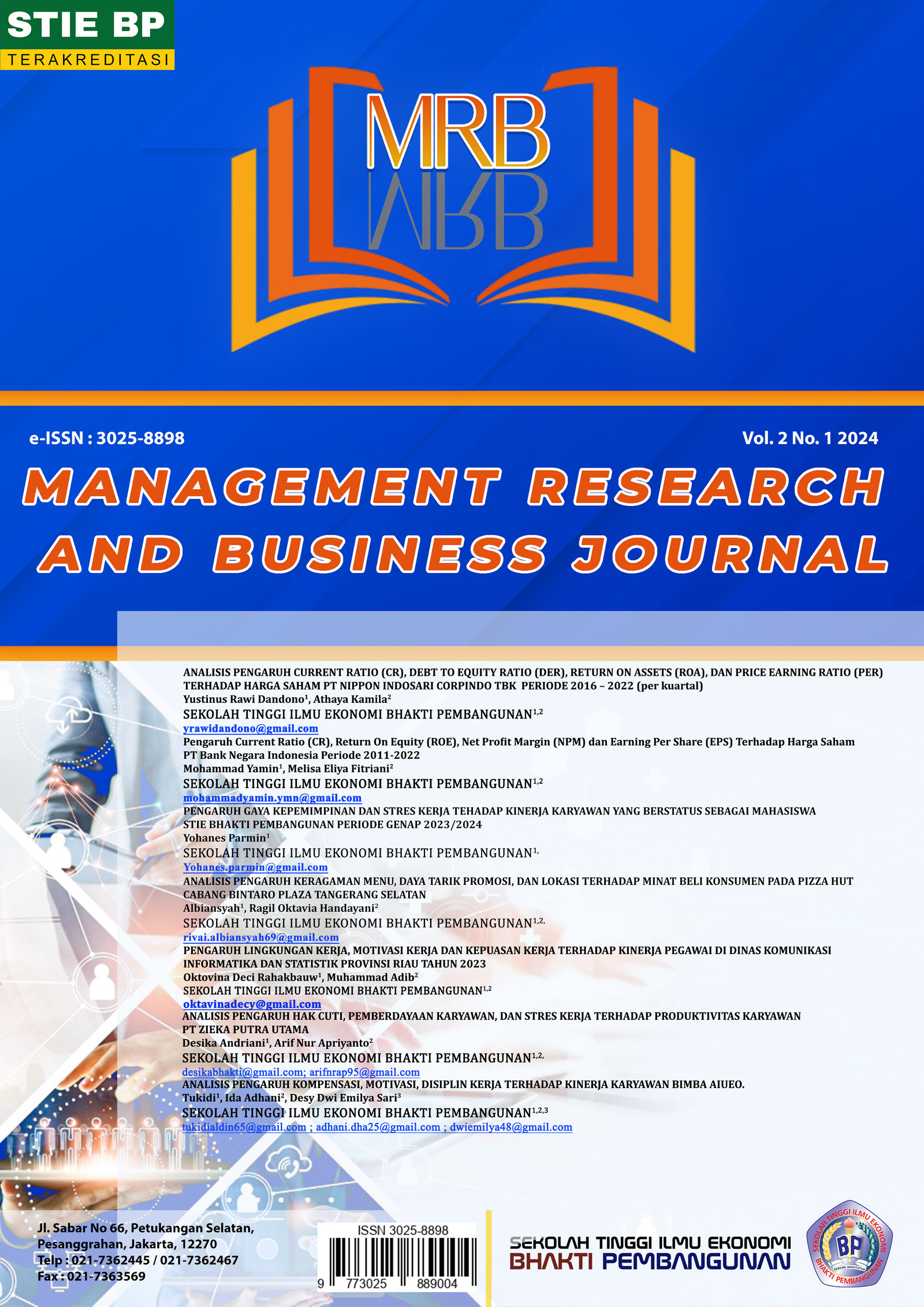PENGARUH GAYA KEPEMIMPINAN DAN STRES KERJA TEHADAP KINERJA KARYAWAN YANG BERSTATUS SEBAGAI MAHASISWA STIE BHAKTI PEMBANGUNAN PERIODE GENAP 2023/2024
Keywords:
Leadership Style, Work Stress, Employee PerformanceAbstract
The aim of this study is to examine the influence of leadership style and work stress on the performance of employees who are students at STIE Bhakti Pembangunan, Even Period 2023/2024. The data collection method was carried out by distributing questionnaires in the form of a Google form to all evening students who were already working, especially those taking 50 reviewer lectures as lecturers consisting of two courses, namely from the Organizational Theory and Organizational Development classes. Data analysis in this study used SPSS Version 24. The sampling technique used was a survey and distribution of questionnaires to students with employee status and data testing used in the research used the Simple Random Sampling method. Data analysis in this study used Validity Test, Reliability Test, Classical Assumption Test, Multiple Linear Regression Analysis, Coefficient of Determination Test, t Test, and F Test. From the research results of the adjusted R2 coefficient of determination test, a value of 0.811 or 81% was obtained. This shows that 81% of employee performance is influenced by leadership style variables and work stress, while the remaining 19% is influenced by other variables such as competence, discipline, etc.
In the t test, the calculated t value for the leadership style and work stress variables respectively is 2.493, 2.207, and 2.232 which is greater than t table 2.009 with a probability level of 0.016, 0.032, and 0.024 respectively which is smaller than the alpha probability of 0.05, so that in general The partial variables of leadership style and work stress have a very strong and significant effect on employee performance. The F test produces an Fcount value of 81.474 which is greater than Ftable 2.79. Then, with a significance level of 0.000, it is smaller than the alpha probability level of 0.05 so that simultaneously the variables of leadership style and work stress have a significant effect on employee performance.


